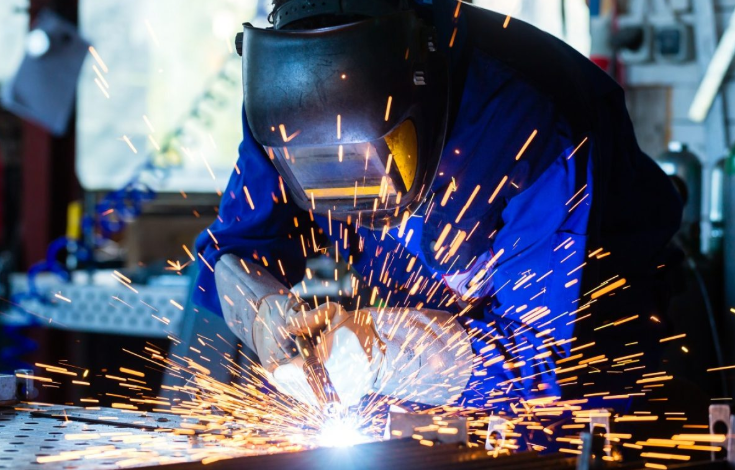Behind the Sparks — What Really Happens in a Steel Fabrication Workshop

If you’ve ever driven past an industrial yard and caught that flash — sparks flying, steel beams stacked like dominoes, the deep hum of grinders — you’ve seen a little slice of Australian industry at work. That’s Steel Fabrication. And for all its noise and grit, there’s an art to it. A kind of rhythm.
It’s not just about metal and machines. It’s about precision, teamwork, and the people who make it happen. The ones in steel-capped boots, gloves worn thin from use. The ones who turn flat sheets and raw beams into something strong. Something real.
So let’s step inside for a moment — into the workshop itself. The heart of Steel Fabrication in Australia.
It Starts with a Drawing
Every job begins with a plan. A sketch, a blueprint, or these days, a 3D model on a computer. But before anything gets cut or welded, fabricators study it. They imagine the weight, the angles, the joints.
Because Steel Fabrication isn’t guesswork — it’s translation. Turning an idea into something physical. You’ve got engineers who design it, draftsmen who refine it, and then the fabricators who bring it to life.
The layout table becomes a stage. Chalk lines, clamps, tape measures — everything lined up like choreography. And that first cut? It matters. One wrong angle and the whole thing can fall out of alignment.
That’s the part people don’t see. The quiet thinking before the noise begins.
Sparks and Skill
Once the work starts, it’s a kind of controlled chaos. The hiss of a plasma cutter. The pop and crackle of welding arcs. The thud of hammer against steel.
It might look rough from the outside, but good Steel Fabrication is all about precision. Every weld has a purpose. Every join is tested.
The heat from welding can warp steel — so fabricators have to plan for it, work with it, almost anticipate how the metal will react. That’s experience you don’t get from manuals. That’s muscle memory.
You’ll hear old-timers say things like, “The steel talks to you if you listen.” And it’s true. After a while, they just know when something’s right — or not.
Not Just Heavy Work
People think Steel Fabrication is all brute force, but that’s only part of it. Sure, there’s lifting and cutting and the odd sore back. But there’s also finesse.
It’s problem-solving, constantly. You’re dealing with tolerances down to millimetres. Curves that have to meet perfectly. Surfaces that have to fit like puzzle pieces when they reach the construction site.
There’s a quiet pride in that. When a fabricator steps back from a finished beam or frame and says, “That’s spot on,” it means something.
You can see it in their hands — steady, practiced, a little burned maybe. But skilled.
See also: How to Sell a Business Successfully: A Complete Guide to Maximizing Your Return
Teamwork You Can Hear
Workshops are noisy places, but underneath all that sound, there’s a strange kind of harmony.
Welders, fitters, machine operators — they work together like clockwork. Everyone’s job connects to someone else’s. You can hear it if you listen long enough: grinders fading as cranes lift, welders pausing as fitters measure.
Steel Fabrication is a team sport. No single person builds a structure alone. It’s a group of people who understand each other’s timing, who trust that the next person will do their part.
And that’s why the best workshops feel more like families than workplaces.
From Workshop to World
When a project leaves the yard, it’s not just “done.” It’s on its way to becoming part of something bigger.
Maybe it’s a bridge. A staircase. A warehouse frame. Sometimes you drive past one years later and think, I made that. And that’s one of the quiet joys of Steel Fabrication — you leave a mark on the landscape.
Most people never notice. They walk under those beams, climb those steps, or work in those buildings without thinking about who built them. But fabricators know. They remember.
That’s pride that doesn’t fade.
Modern Tools, Old-School Grit
The tech has changed, sure. CNC machines, laser cutters, and digital weld monitoring. The tools keep getting smarter.
But the heart of Steel Fabrication hasn’t changed much. It’s still about hands-on work. Still about knowing when to adjust a torch flame, or when a beam’s just slightly off square.
Technology helps, but it doesn’t replace instinct. That sense of touch that comes from years on the floor. Machines can measure — but they can’t feel.
That’s why good fabricators are still in high demand. You can’t automate craft.
The Sound of a Good Day
By afternoon, the smell of hot metal hangs in the air. The radio hums softly under the whir of fans. Someone’s making a coffee in the break room, another’s double-checking a drawing.
It’s not glamorous work, but there’s something honest about it. You see progress in real time. You start with raw steel, and by the end of the day, there’s a new frame standing in the yard. Solid. Ready to be shipped.
That’s what keeps people in this trade — that tangible reward. The feeling that I built this.
Steel Fabrication isn’t about sitting at a desk or waiting for approval emails. It’s about doing. Creating, leaving behind something that matters.
Why It Matters More Than Ever
Australia’s building boom, renewable projects, transport networks — they all need it—strong, reliable fabrication.
Behind every crane on the skyline, behind every wind turbine or warehouse, there’s a team of people shaping steel to exact specs—that’s Steel Fabrication — the muscle and backbone of modern industry.
And as new projects rise, it’s good to remember: these aren’t just structures. They’re stories of skill, sweat, and precision, forged one weld at a time.
A Final Thought
Next time you see a building go up or a new overpass stretch across the road, take a second to notice the steel. The way it holds, gleams, fits perfectly.
Because somewhere, a crew spent days — maybe weeks — getting those details right. Grinding, cutting, welding, checking again.
That’s Steel Fabrication from NewGen Steel. The craft behind the skyline. The steady hum beneath Australia’s growth. The sound of work that lasts.



